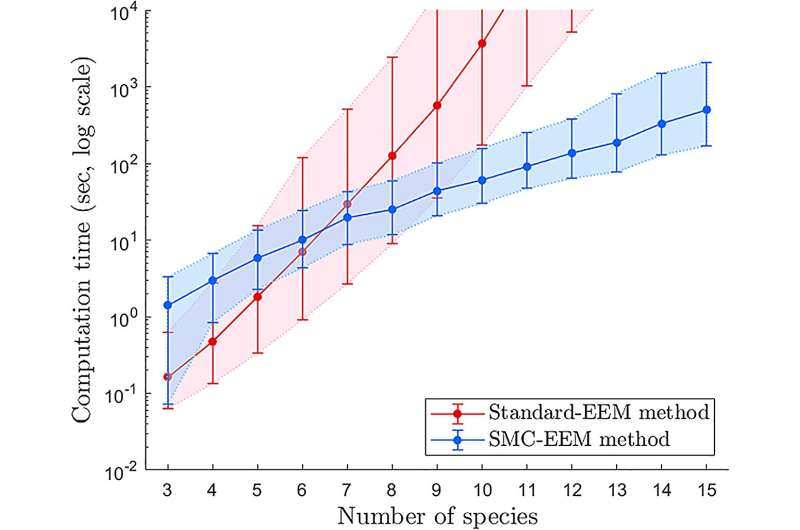This article has been reviewed according to Science X's editorial process and policies. Editors have highlighted the following attributes while ensuring the content's credibility:
fact-checked
peer-reviewed publication
trusted source
proofread
New rapid method to predict effects of conservation actions on complex ecosystems

A new way to analyze the effects of conservation actions on complex ecosystems has cut the modeling time from 108 days to six hours, QUT statisticians have found.
Ph.D. researcher Sarah Vollert, from the School of Mathematical Sciences and the QUT Center for Data Sciences, said it was impossible to predict exactly how conservation actions would affect each species.
"Though well-intentioned, conservation actions have the potential to backfire," Vollert said.
"For example, if decision-makers decide to eradicate feral cats, it could lead to explosive populations of their prey species, like rabbits.
"Uncontrolled rabbit populations could then have devastating effects on the vegetation, destroying the habitat native species need to survive.
"This hypothetical example shows how challenging it can be to predict the cascading effects of conservation actions, where changes in one species can trigger a chain reaction, affecting many others."
Vollert said limited computational power had impeded the capability of mathematical models to identify the probabilities of unintended consequences from conservation actions on each of the species in an ecosystem.
"To get around the problem simplified representations of ecosystems are used to generate results in a reasonable timeframe," she said.
"In this research, I used some of the latest data-science techniques in the field of approximate Bayesian statistics to increase the efficiency of conservation risk analyses, without sacrificing any accuracy.
"These connections hadn't been solidified before, yet connecting this ecosystem planning tool to Bayesian statistics allowed us to develop faster methods.
"Using my new methods, when we considered Victoria's Phillip Island's ecosystem with complex species interactions described by ecologists, we generated the model in six hours.
"But, to have used the existing tools would have taken 3.5 months.
"This faster method means ecologists don't need to simplify their understanding of an ecosystem to use the conservation risk assessment tool."
The study, "Unlocking ensemble ecosystem modeling for large and complex networks," was published in PLOS Computational Biology.
The QUT researchers were Vollert, Professor Christopher Drovandi and Dr. Matthew Adams.
More information: Sarah A. Vollert et al, Unlocking ensemble ecosystem modelling for large and complex networks, PLOS Computational Biology (2024). DOI: 10.1371/journal.pcbi.1011976
Journal information: PLoS Computational Biology
Provided by Queensland University of Technology




















